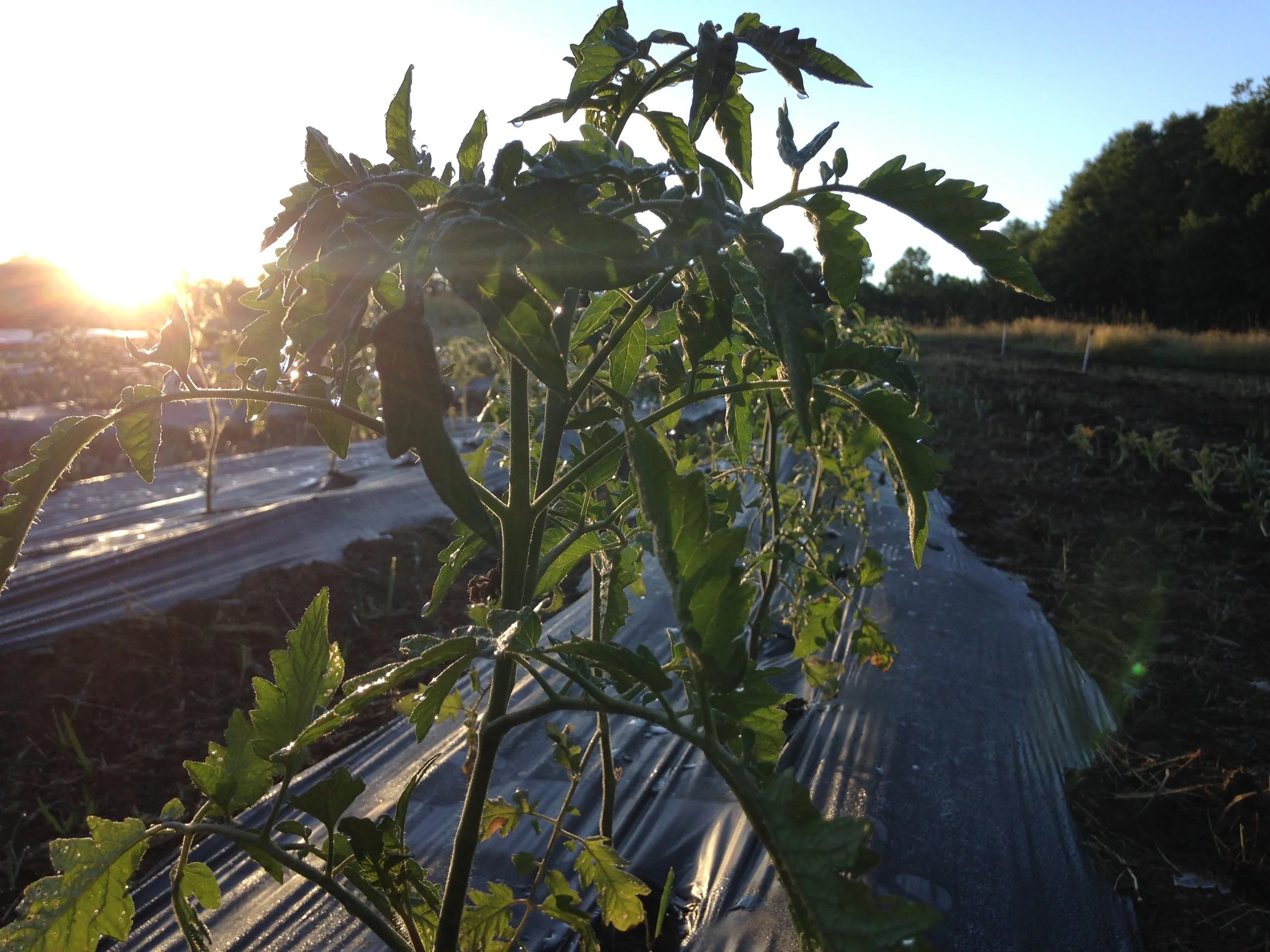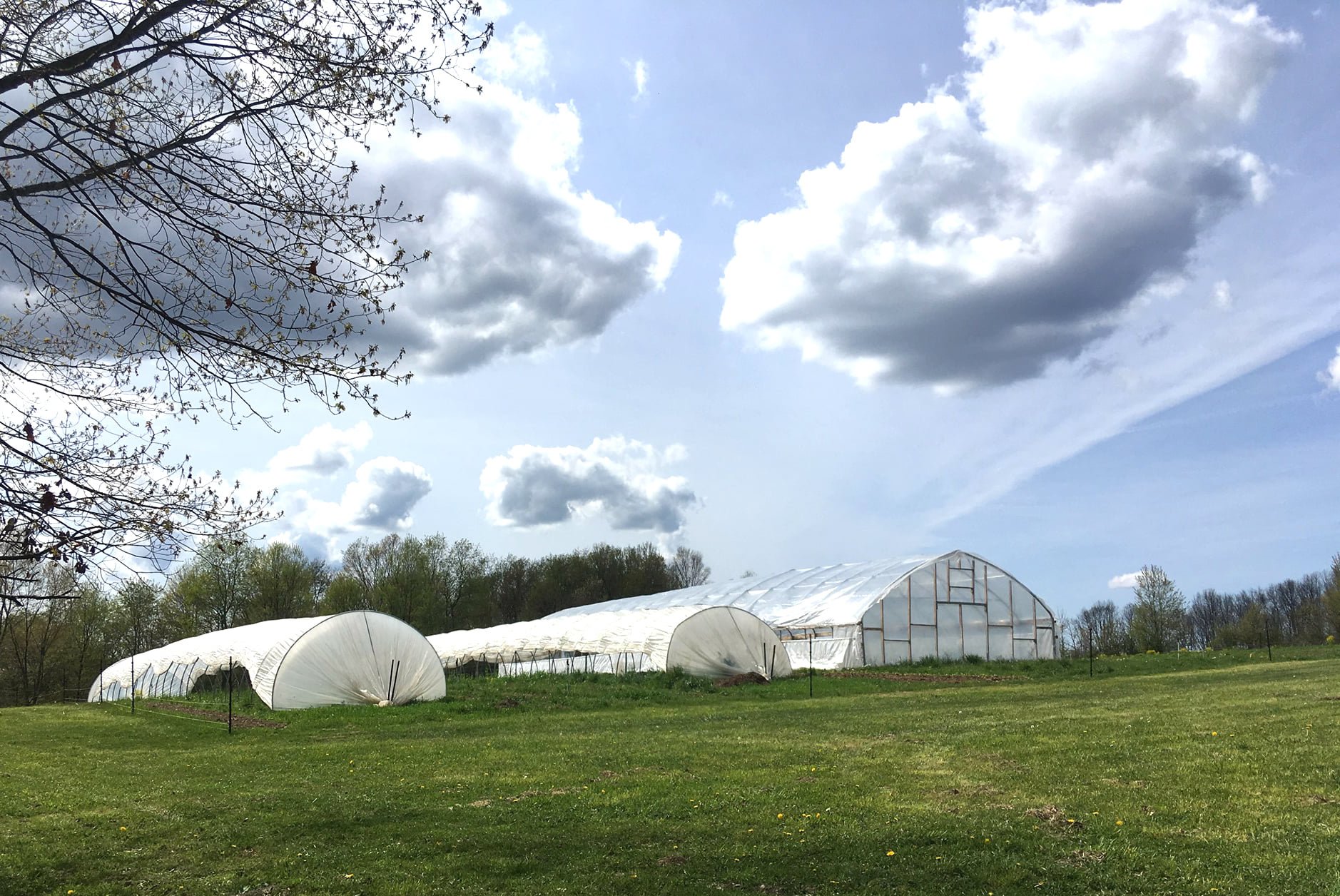We’re now eight work days out from Jason leaving his full-time job. It might seem like a time for radical rethinking of farm revenue, but for two reasons this December isn’t much different than past years.
For one, the farm’s functioned for seven years now, and Jason’s meticulously tracked our yearly progress. Because of this, the adjustments we need to make on paper to prepare for the season are predictable. We’ll fill in details over the next few weeks, then it’s time to order seeds and start indoor seeding by late January.
The second reason we aren’t in a frenzied restructuring mode is that the farm will not be our sole source of income. Initially, our plan was to ramp the CSA back up to 75 members, as it was in Season 5, and attend three farmers markets a week. We also laid the groundwork with another regional retailer and planned to stock our produce there.
Over the summer, our plans for Season 8 shifted significantly when Jason started his grant-writing/project managing business, Spark Community Capital. This venture uses his decade of knowledge in this field, and lets him control his own schedule. It also provides a new income stream for our family and shifts pressure off the farm.
With this change, we decided to continue with an approximately 50-member CSA (this will once again include several free shares in our Give & Grown program). We’ll also be applying to attend one farmers market this year - the Meadville Market House on Saturdays.
Prior to the pandemic, we attended three farmers markets a week with the help of a part-time employee. In those days, we set up two days a week at the Titusville Open Air Market, and one day at the Market House. The Titusville market is wonderful, and helped us tremendously in our earliest years. But for the time being, we’re cutting back to the one market for two reasons.
The first reason is time. The day before any farmers market is spent harvesting, washing, and packing everything we plan to sell. In order to harvest enough to make the market worth our while, this process takes a whole day. Our goal is a table with a minimum of $300 of produce. A table with $400 of produce that we sell in about four hours would be a good day. More than that would be a great day. Then, of course, we spend a good portion of the following day actually at the market, setting up, selling, and closing down.
So a trip to the farmers market is about a day and a half of labor. The more markets we attend, the less time we have in the field or doing something entirely different, which brings me to the second reason.
We’ve decided that we no longer want our family going in different directions on Saturdays. We want to enjoy Saturdays during the growing season together. To make this happen, we’ll make all CSA deliveries on Thursdays (in the late afternoon/early evening), and then we can all be at the farmers market together.
We’re excited about this because the farmers market is a lot of fun, and so is downtown Meadville on a Saturday morning. Visiting with people who value local, no-spray produce, and the rainbow of foods NW Pa. provides, is rewarding for a farmer. It’s also good for a gardener’s soul to chat with fellow farmers. When much of your weekly conversation is the overheard humming of bees, the social connection is much appreciated.
Jason’s looking forward to it because he hasn’t had the opportunity to work a market regularly in all his years farming. He and Silas used to pop in to visit me as they passed through on CSA deliveries, and I know neither one of them ever wanted to get back on the road again.
There’s something special in the air at a farmers market. The ones in this area are small, not the endless stretches that sprout in larger cities. While I’m sure big markets are wonders to behold, little markets are cozy. Everyone knows everyone, and they’re easy to navigate. You’re doing right by your health and your community when you visit a market, big or small.
In 2022, we plan to continue selling to Core Goods, in Oil City, and Edinboro Market. These unique shops fill their shelves with local products and are important to small farms like ours.
We also plan to continue selling online via our website.
While our circumstances will change dramatically in 2022, our goal is not to push ourselves to our limits. We’ve done that for seven years. We also spent the last few years paying off our debts and developing a frugal lifestyle anchored by minimalist tenets. We did all this to essentially gain our freedom from the traditional work model, which structures a life around working for someone else and often leaves only crumbs of time (if that, even) for your family, your life, and your community.*
While this year feels experimental, it does not feel scary. Like any experiment, it could fail. But we believe in our hypothesis and we’ll tinker with it as needed. Our method includes living debt free and on a budget; cherishing people and experiences over material things; and working hard, but smart, as needed. We hope the conclusion to this experiment is a life with our loved ones and our own well-being at its core.
~ Stella
* If you’re new to this idea and it intrigues you, may I suggest, “Your Money or Your Life,” by Vicki Robin and Joe Dominguez, and “The Year of Less: How I Stopped Shopping, Gave Away My Belongings, and Discovered Life Is Worth More Than Anything You Can Buy,” by Cait Flanders. You may also be interested in the excellent blog, “Frugalwoods.com.”





















